Summer Shoe Threat-o-Meter
From safe shoes to Freddy Kruegers of footwear, a surgeon helps us saunter through
summer without getting hurt or looking lame.
By Corrie Pikul

Photo: Thinkstock
European Cork Sandals
Danger ranking: 2. "They feel wonderful for four to five hours of sitting or
standing," says Hillary Brenner, DPM, a podiatric surgeon in New York. "But walking in these can put pressure on the ankles, knees and hips. Even though
they have arch support, they don't have enough for long journeys."
Best for: Camp counseling; pointing out constellations in the night sky
Avoid: Hiking
Doctor's note: "Break them in by wearing them around your home so you know how they feel before you wear them outside."
Best for: Camp counseling; pointing out constellations in the night sky
Avoid: Hiking
Doctor's note: "Break them in by wearing them around your home so you know how they feel before you wear them outside."
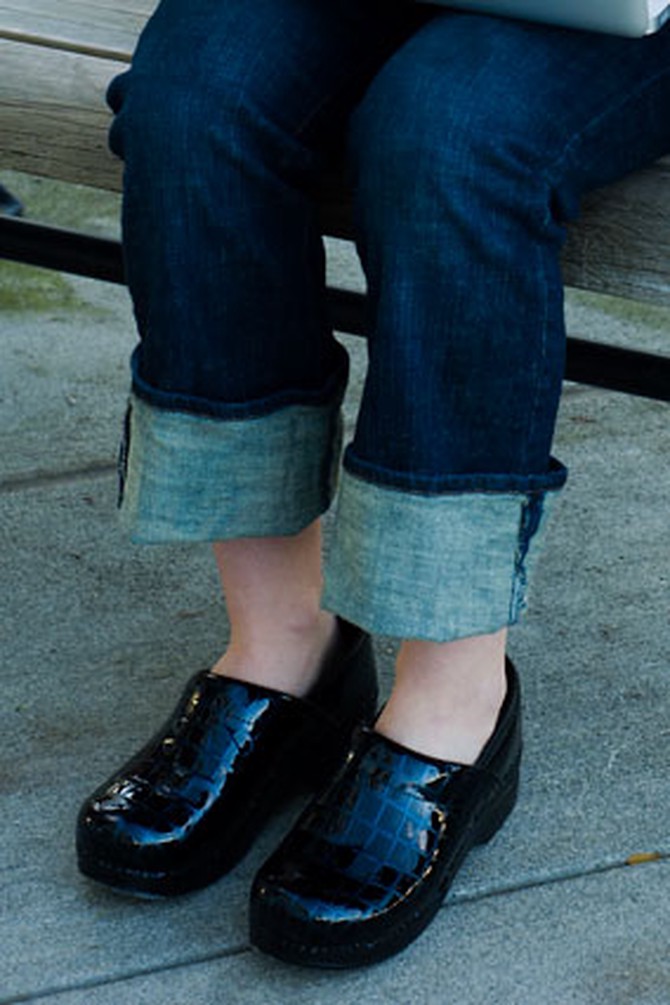
Photo: Thinkstock
Clogs
Danger ranking: 2. "These saved my life when I was a resident. But while they're great for standing, they're a little too unstable for distance walking."
Best for: Swaying at a mellow concert; preparing hors d'oeuvres for a party
Avoid: Sightseeing around Europe
Doctor's note: "If you're going to be doing a lot of walking, your best bet really is a pair of stylish athletic sneakers."
Best for: Swaying at a mellow concert; preparing hors d'oeuvres for a party
Avoid: Sightseeing around Europe
Doctor's note: "If you're going to be doing a lot of walking, your best bet really is a pair of stylish athletic sneakers."

Photo: Thinkstock
Wedges
Danger ranking: 3. "Wedges add height, and I personally feel more stable in wedges than in heels or platforms. The back of the shoe shouldn't be much higher than the front."
Best for: Getting around the office on "Summer Monday–Thursdays"; standing during a speech or a toast
Avoid: Rushing to catch a flight
Doctor's note: "Cork and raffia soles offer better shock absorption. Wood is very rigid, which can cause your foot to overcompensate. This can lead to instability and extra pressure on the knees and hips. With wooden sandals, look for a rubberized sole that helps with shock absorption."
Best for: Getting around the office on "Summer Monday–Thursdays"; standing during a speech or a toast
Avoid: Rushing to catch a flight
Doctor's note: "Cork and raffia soles offer better shock absorption. Wood is very rigid, which can cause your foot to overcompensate. This can lead to instability and extra pressure on the knees and hips. With wooden sandals, look for a rubberized sole that helps with shock absorption."
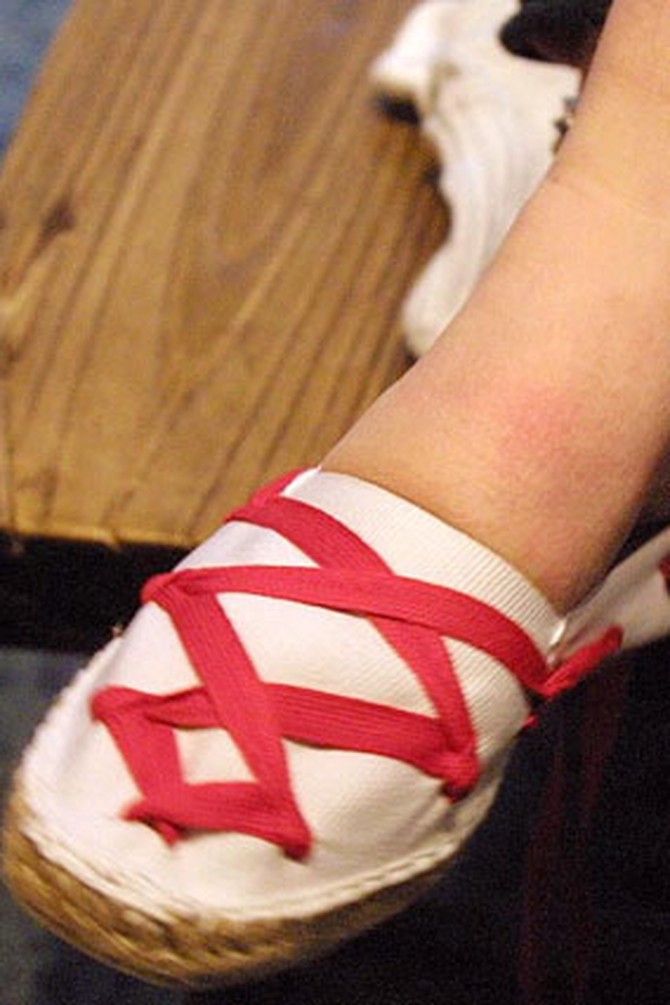
Photo: Getty images
Espadrilles
Danger ranking: 3. "A bit of a wedge is better than a completely flat espadrille because it offers a little more support. And the rope soles can provide more of a lift than thin ones. These are good for light activity—walking or standing in moderation—but not much more than that."
Best for: Family reunions; picnicking in the park
Avoid: Energetic frolicking (especially in the rain)
Doctor's note: "The fabric would be more comfortable for those with calluses and bunions that are irritated by leather straps and hardware."
Best for: Family reunions; picnicking in the park
Avoid: Energetic frolicking (especially in the rain)
Doctor's note: "The fabric would be more comfortable for those with calluses and bunions that are irritated by leather straps and hardware."
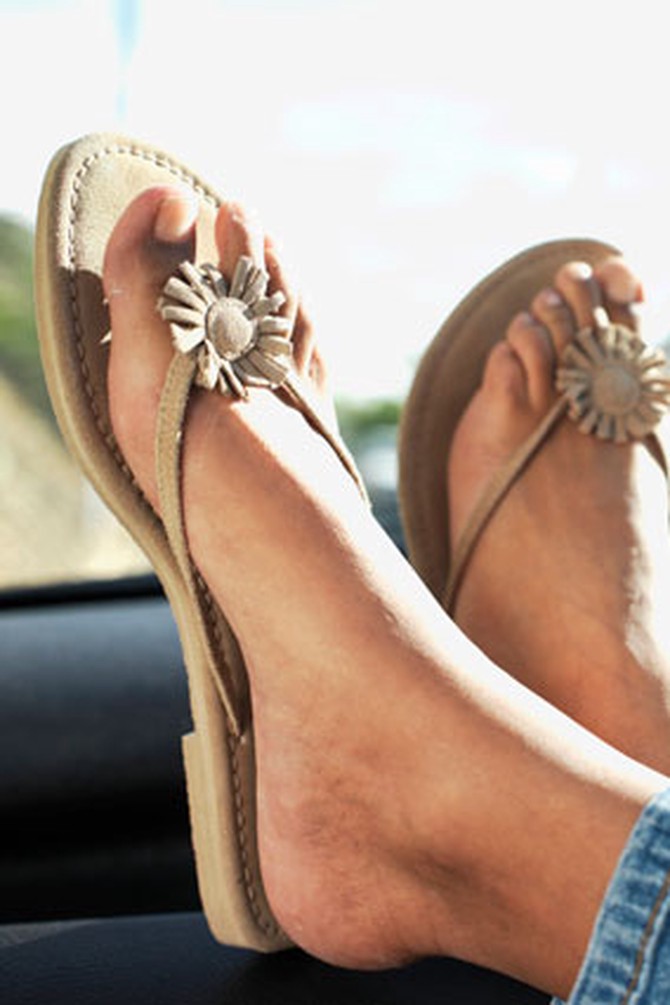
Photo: Thinkstock
Casual Flat Sandals
Danger ranking: 3. "Avoid sandals without arch support, straps that rub and cause blisters, cardboard-thin soles that don't offer any shock absorption and could eventually cause stress fractures. When we walk, we put two to three times the amount of body weight on our feet, so you need shoes that can absorb that shock."
Best for: Addressing individual quirks. "Thong-style sandals can be better for people with wider feet, calluses or bunions, as there's more room in the forefoot. The ankle strap of gladiator-style sandals could help slightly with stability, but these sandals often lack arch and heel support. To avoid blisters on the ankle or top of the foot caused by rubbing straps, keep those areas well moisturized."
Avoid: Running through amusement parks
Doctor's note: "Worishofer sandals were designed by a podiatrist, and the cork sole provides good shock absorption. Also check out MooShoes.com, a retailer that sells shoes made from vegan, cruelty-free materials, like faux leather and satin that tend to be softer on feet."
Best for: Addressing individual quirks. "Thong-style sandals can be better for people with wider feet, calluses or bunions, as there's more room in the forefoot. The ankle strap of gladiator-style sandals could help slightly with stability, but these sandals often lack arch and heel support. To avoid blisters on the ankle or top of the foot caused by rubbing straps, keep those areas well moisturized."
Avoid: Running through amusement parks
Doctor's note: "Worishofer sandals were designed by a podiatrist, and the cork sole provides good shock absorption. Also check out MooShoes.com, a retailer that sells shoes made from vegan, cruelty-free materials, like faux leather and satin that tend to be softer on feet."
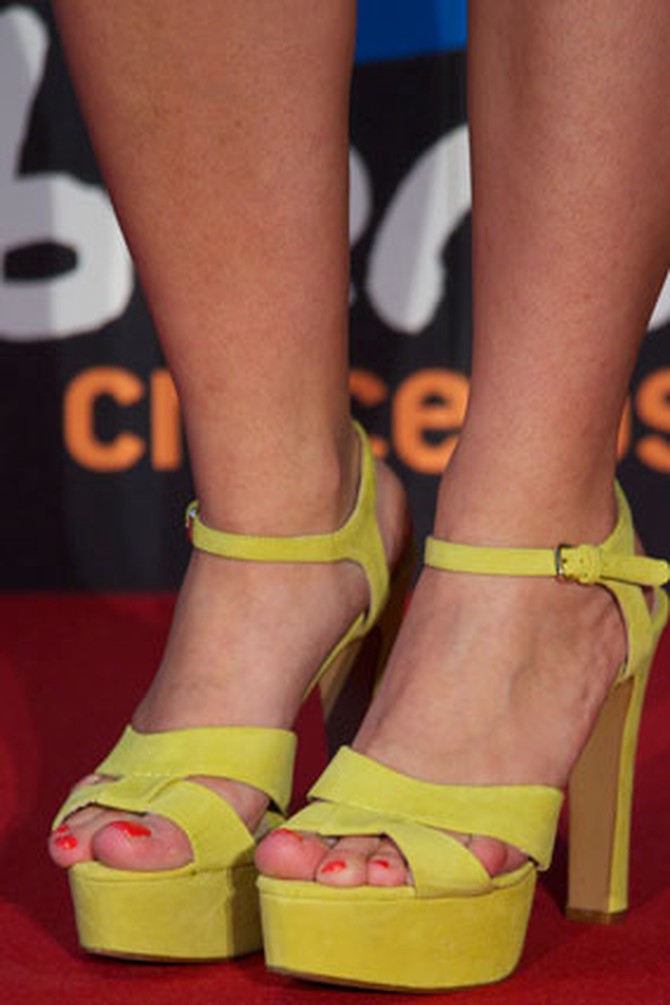
Photo: Getty Images
Platforms
Danger ranking: 4. "They're wobbly and compromise the normal gait pattern. The situation is even worse with exaggerated ratios between the toe and heel height"
Best for: Adding height at a crowded rooftop party
Avoid: Climbing stairs in lighthouses or ancient cathedrals; chasing after children
Doctor's note: "For a wedding or other formal occasion, consider styles from Easy Spirit, Aldo or Stella McCartney—pricey but worth it. Try them with a padded insole or arch cushion from the drugstore."
Best for: Adding height at a crowded rooftop party
Avoid: Climbing stairs in lighthouses or ancient cathedrals; chasing after children
Doctor's note: "For a wedding or other formal occasion, consider styles from Easy Spirit, Aldo or Stella McCartney—pricey but worth it. Try them with a padded insole or arch cushion from the drugstore."

Photo: Thinkstock
Casual Sneakers
Danger ranking: 4! "I have a lot of patients who come to me with heel pain from plantar fasciitis or heel spurs that they developed from wearing very flat sneakers that don't offer support."
Best for: Cruising on a bicycle built for two; chilling at a backyard barbecue
Avoid: "They may look sporty, but they're not intended for walking or standing for long periods of time."
Doctor's note: "I work with a lot of professional women who think these are their 'safe shoes,' but they can cause a lot of problems."
Best for: Cruising on a bicycle built for two; chilling at a backyard barbecue
Avoid: "They may look sporty, but they're not intended for walking or standing for long periods of time."
Doctor's note: "I work with a lot of professional women who think these are their 'safe shoes,' but they can cause a lot of problems."
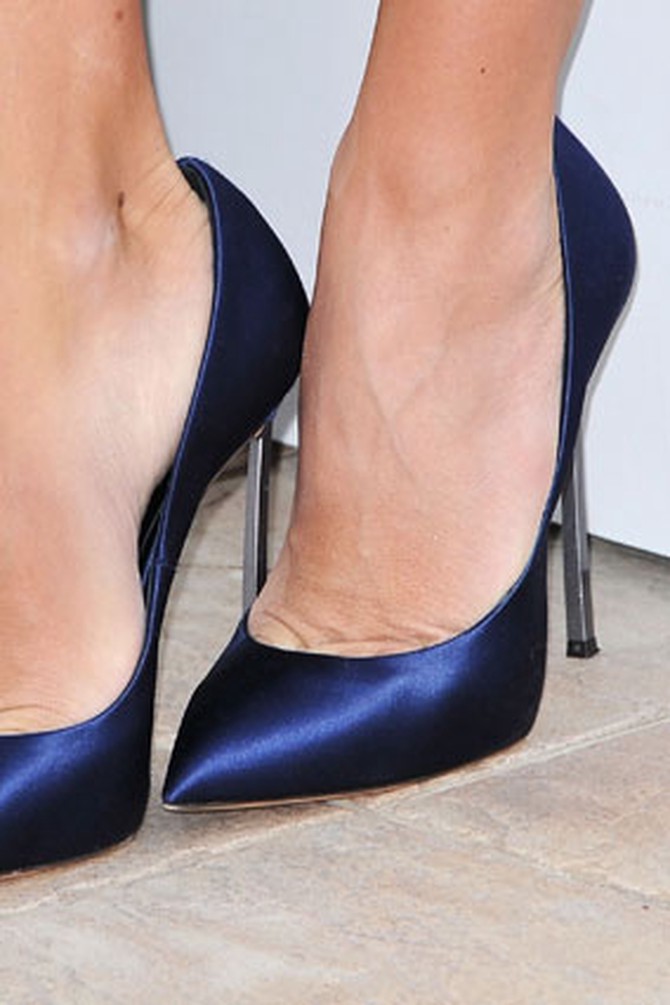
Photo: Getty Images
Stilettos
Danger ranking: 5. We knew they weren't orthopedic shoes, but Brenner says stilettos are even worse than we thought: "Intense pressure on the front of the foot can lead to things like sesamoiditis, which is inflammation of the tiny bones under the big toe, and metatarsalgia pain, caused by pressure under the toes. Tight shoes that squeeze the toes together can lead to neuromas, or thickened and irritated nerves. Use caution when wearing shoes higher than two inches, especially for longer than two hours. We see a lot of lateral ankle sprains caused by stilettos," says Brenner. She adds this caveat: "Choosing footwear is like dieting: You can wear anything in moderation."
Best for: Boosting height, confidence, sex appeal and personal style (just remember that eight weeks on crutches can undo it all)
Avoid: Walking (ask someone to carry you!); fulfilling your bridesmaid duties on the dance floor
Doctor's note: "Get your feet properly measured. Go at the end of the day when feet are most swollen, and have the length and width measured while standing up, because shoes fit differently when you're sitting down. I'm a believer in custom orthotics that have been prescribed by a doctor. The Cobra orthotic is made to be worn in high-heeled shoes, and provides a little metatarsal cushioning and midfoot control."
Best for: Boosting height, confidence, sex appeal and personal style (just remember that eight weeks on crutches can undo it all)
Avoid: Walking (ask someone to carry you!); fulfilling your bridesmaid duties on the dance floor
Doctor's note: "Get your feet properly measured. Go at the end of the day when feet are most swollen, and have the length and width measured while standing up, because shoes fit differently when you're sitting down. I'm a believer in custom orthotics that have been prescribed by a doctor. The Cobra orthotic is made to be worn in high-heeled shoes, and provides a little metatarsal cushioning and midfoot control."
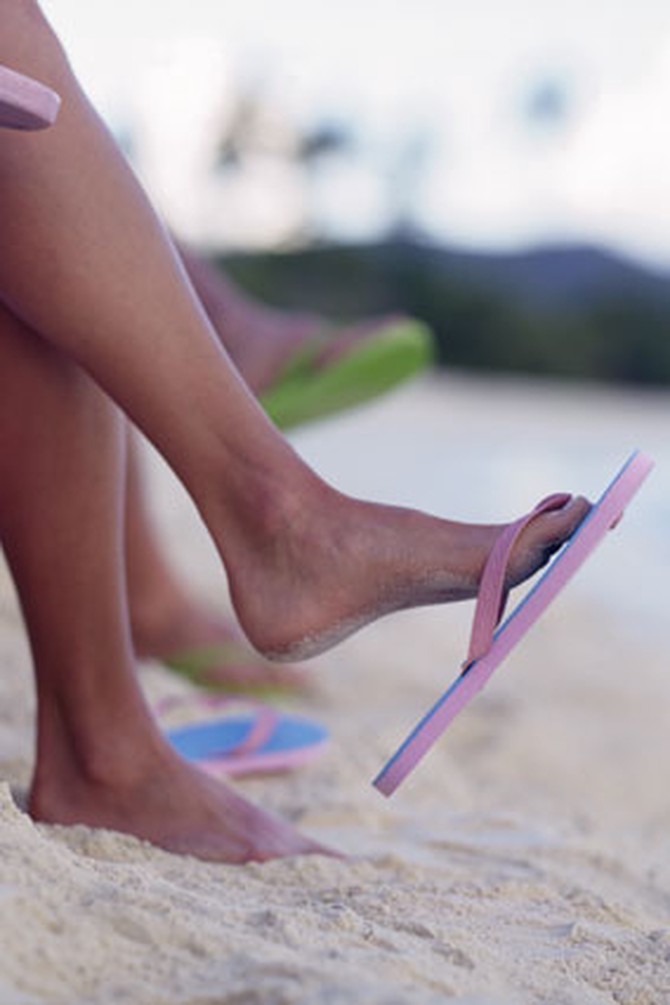
Photo: Thinkstock
Flip-Flops
Danger ranking: 5. "If you can twist them or fold them up and put them in your pocket, they're no good. There's no arch support and no lateral support. You may as well be walking barefoot."
Best for: "Lounging at the beach or the pool."
Avoid: Distances longer than the parking lot to the sand
Doctor's note: "I'm not sure if FitFlops give you the workout that they claim, but they have great arch support and heel lift. The back of the foot controls the motion of the front of the foot, so if you stabilize the heel, you also stabilize the arch and the forefoot. They also have a thicker sole, and raising the foot slightly off the ground helps you avoid glass and rocks. FitFlops are best for people who have already achieved some level of fitness—I wouldn't recommend them for those who are unstable in their gait."
Best for: "Lounging at the beach or the pool."
Avoid: Distances longer than the parking lot to the sand
Doctor's note: "I'm not sure if FitFlops give you the workout that they claim, but they have great arch support and heel lift. The back of the foot controls the motion of the front of the foot, so if you stabilize the heel, you also stabilize the arch and the forefoot. They also have a thicker sole, and raising the foot slightly off the ground helps you avoid glass and rocks. FitFlops are best for people who have already achieved some level of fitness—I wouldn't recommend them for those who are unstable in their gait."
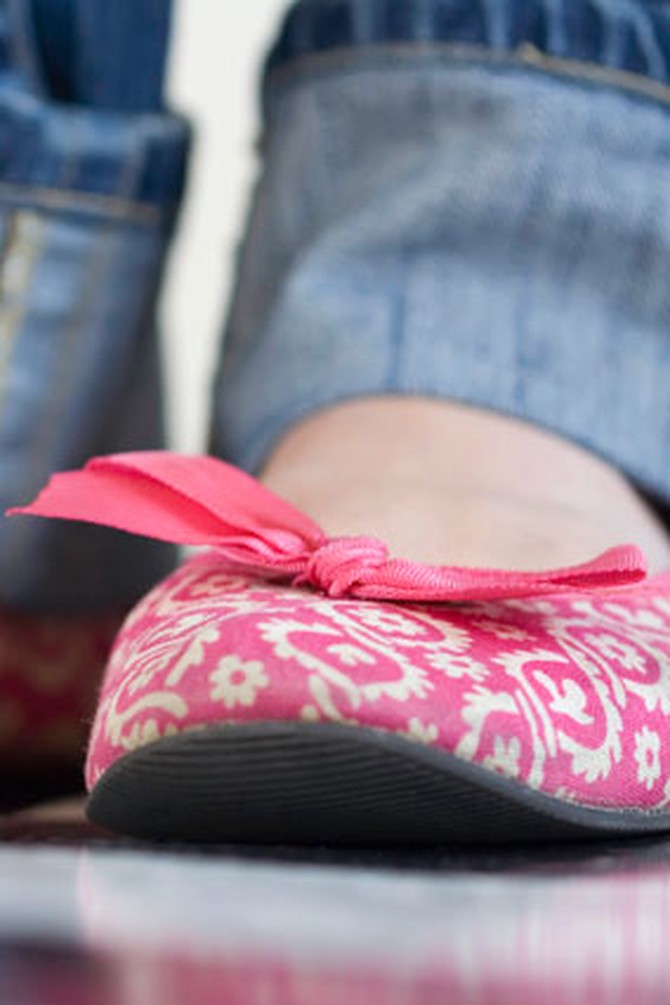
Photo: Thinkstock
Ballet Flats
Danger ranking: 5+. "The flattest, flimsiest styles of these shoes can do as much harm—if not more—than a pair of high heels. Overwearing flats can cause pain in the arches, bunions and the heels. There's absolutely no cushion or support, but people wear them like they're athletic sneakers. That's what makes them dangerous."
Best for: Dining alfresco; watching a play at an outdoor theater
Avoid: Museum tours; hopscotch
Doctor's note: "Commute in running sneakers and then change into these at your destination."
Best for: Dining alfresco; watching a play at an outdoor theater
Avoid: Museum tours; hopscotch
Doctor's note: "Commute in running sneakers and then change into these at your destination."
Published 06/07/2011
As a reminder, always consult your doctor for medical advice and treatment before starting any program.

